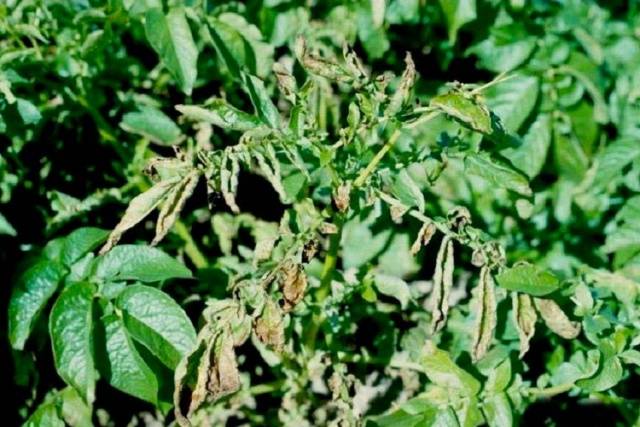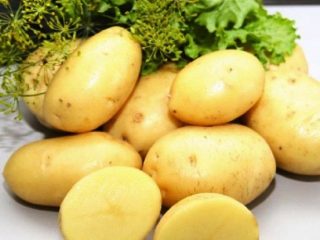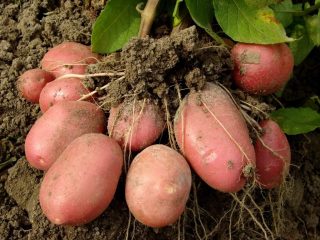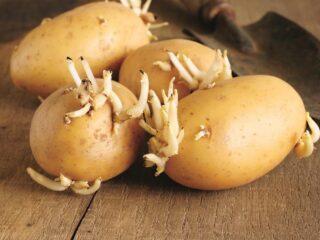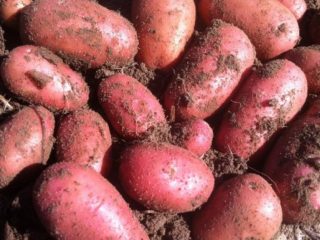Content
Every farmer or summer resident takes great responsibility when choosing a variety of vegetable crops. Potatoes are no exception. To get a decent harvest at the planned time, you should seriously study the characteristics and advantages of the desired variety. German breeders are offering a new potato variety, Granada, released in 2015.
In just one season, Granada won the hearts of many potato lovers. To appreciate the variety, you will have to get acquainted with its advantages and features. For what qualities do gardeners prefer the new product? How to determine the required variety?
Variety of potato varieties
It is the opportunity to choose that makes this culture very popular. First, you should know that potatoes are divided according to yield and ripening time:
- Early varieties. The difference between this group and other species is its rapid growth and short growing season. Planting of these potato varieties begins in early spring. Already at the beginning of April, the first tubers fall into the ground, and after 65 (on average) days the crop is ready for harvest. In the vacant space in the garden, you can plant another crop, which will have time to produce a new harvest before the fall. The disadvantage of early potatoes is their inability to be stored.It will not lie down for a long time and will quickly become lethargic - it loses moisture.
- Mid-early varieties. They are considered more unpretentious and capable of storage. Tubers of such potatoes must be prepared for planting (germinated). The harvest is obtained a little later than the early varieties - after 80 days.
- Mid-season varieties. Most often, the choice of gardeners falls on these types of potatoes. The harvest is ready for harvest in 90-100 days. This period usually falls in August. They are considered less whimsical, with good taste.
- Mid-late and late varieties. The most suitable varieties for long-term storage, which provide delicious vegetables throughout the winter. The tubers do not need to be germinated; the varieties are more resistant to diseases and unfavorable conditions. The harvest ripens in 110-120 days.
Mid-early and mid-late varieties are classified as intermediate potato varieties. The high content of starch, vitamins and protein makes potatoes indispensable in the diet. If a variety is needed for winter consumption, then among the qualities that the tubers possess should be:
- good keeping quality;
- long period of rest;
- resistance to storage diseases.
It is quite difficult to find a variety that fully meets all requirements. But still, breeders are trying to develop potato brands that best meet the needs of vegetable growers. Among such reliable varieties, Granada potatoes should be noted.
Description and features
If we start describing the Granada variety with its appearance, we will need to note the attractiveness of the tubers.
They are medium in size and have a beautiful oval-oblong shape. The weight of each Granada potato ranges around 100 g, so all the tubers look very neat due to their almost identical size.The eyes are harmoniously located over the entire surface of the skin, without disturbing the attractiveness of the tubers. This gives Granada potatoes a high-quality presentation. Therefore, the variety attracts the attention of not only summer residents, but also farmers who grow potatoes for sale. The color of the peel and pulp is light yellow. When damaged and after heat treatment, tubers of the Granada variety do not change their color or darken. This is another significant plus for buyers.
The taste qualities of the Granada variety are very high. The skin is thin, smooth, but durable. The pulp is tender and pleasant to the taste. Granada potatoes are used to prepare culinary delicacies and are recommended for the diet. In terms of its nutritional composition, it has a high starch content (over 17%), which makes the tubers pleasant to the taste.
The Granada variety, whose yield characteristics are very high, is in deserved demand. After all, up to 15 potatoes are harvested from one mature bush. This species is a mid-late species, so the harvest is harvested 110 days after planting. The yield of Granada potatoes is more than 6.5 kg per 1 sq. m of plot area, which makes it possible to grow only this variety without duplicating others.
Keeping quality or storage ability is always considered an important quality for potatoes. No appearance will save the harvest if the tubers rot or dry out in winter. The Granada variety meets all the expectations of vegetable growers. Keeping quality is a record – 97%. Material waste after winter storage averages 3%. Breeders took into account all the requests of potato growers when developing the Granada variety.
The bush of the plant is classified as an intermediate type, the height of one is in the average range. The bulk is quite low, but some plants can grow to medium size. The leaf mass is light green, small.
Another important quality that the Granada variety has is drought resistance. In addition, these potatoes grow well in any soil. If all these advantages have attracted your attention, then it’s worth taking a closer look at the agricultural technology of growing wonderful potatoes.
Responsible moment - getting ready to land
Experienced potato growers begin preparing for planting in the fall. As soon as the crop is collected and sorted, you need to begin selecting seed material. For planting, you need to choose large, healthy tubers of the Granada variety that can produce good sprouts. Many gardeners believe that they should take small potatoes for planting, but this can lead to a significant reduction in yield and loss of valuable qualities of the variety. For the Granada potato variety, an important requirement remains the selection of large, good tubers from full-fledged bushes for the new planting year. In the spring, according to the recommendations of experts, you can do two things:
- plant seed immediately in open ground;
- grow seedlings, which increases yield by 40%.
In the first option, Granada tubers are planted, focusing on the recommendations of the lunar sowing calendar. But many gardeners simply stick to the usual deadlines and begin planting Granada potatoes at the end of April. If the soil is not warm enough, planting is postponed for a week or more.This depends on the climate of the region and soil temperature. It should not be lower than +8°C.
For the second option, first place the tubers for germination in a mixture of peat and soil and cover them. When the sprouts appear, they are broken off and placed in boxes with prepared soil. It should contain garden soil, peat and sand. They take 4 times more peat than land. The amount of sand depends on the composition of the garden soil. The sprouts must be buried 2/3 deep and watered as the soil dries. The box is placed so that the illumination is very good and covered with film. The first shoots usually appear after 18 days. After another 14 days they are ready to be disembarked for permanent residence.
The method of planting Granada seed potatoes depends on the type of soil and weather conditions in the growing region. The dry, hot climate and light soil allow tubers to be planted in holes or furrows. In more damp and dense soil, ridges are made to raise the bushes above the ground. Clay soil requires a planting depth of no more than 5 cm, but with loose and fertile soil the depth reaches 12 cm.
The optimal row spacing is 65-70 cm. This row arrangement will allow the Granada potato bushes to have good lighting and air access. A distance of at least 30 cm is maintained between plants. When planting, the soil is fertilized with ash. Add half a glass of ash to each hole and be sure to moisten the soil. Then put the potatoes and sprinkle with soil. If there is not enough ash or no ash at all, then you can replenish it with mineral complex fertilizers according to the instructions.
Basic care requirements
The main stages of agricultural technology remain the same as for other varieties. Potatoes "Granada" are unpretentious varieties with a high degree of drought resistance and adaptability to growing conditions. The main stages of high-quality care for the Granada variety:
- Hilling. Until the Granada potatoes reach their ripeness, it is necessary to carry out this procedure at least twice. The first is when the height of the bush is 15-16 cm, the second - before flowering begins. To do this, use the soil between the rows, raking it to the base of the bushes. It is not recommended to skip this step for several reasons. Firstly, hilling will allow you to form a neat bush and prevent it from falling apart. Secondly, it will improve the yield of Granada potatoes due to the formation of additional underground stems, Thirdly, it will protect the seedlings from possible frosts.
- Nutrition. The first time you should feed potatoes is after planting, a month later. Use a mixture of mineral fertilizers: urea, potassium sulfate and superphosphate in a ratio of 1:1:2. Where 1 is 10 g, respectively, 2 is 20 g. This amount should be taken per 10 liters of water. If more is needed, then increase the amount of minerals. The mixture is diluted and watered over the potatoes. Organic is an excellent option. Granada potatoes respond very well to bird droppings. The main thing is to use it correctly so as not to burn the plants. The litter is infused for at least a week, diluted with 0.5 liters in a bucket of water and watered over the potatoes. The plants are fed the second time when the buds appear, the third time after flowering.
- Watering.
For the Granada variety, you need to maintain moderate watering.Under normal climatic conditions, watering should be carried out no more than three times per season - after emergence, after budding, after flowering. In rainy weather, you may not need to water at all until flowering. Watering is considered to be of high quality if the soil is wet to 50 cm.
- Prevention, control of diseases and pests. For the Granada variety, there is a danger of Alternaria blight, which affects all plant structures.
To prevent such a disaster, tubers are sprayed before planting. Biological products “Baktofit”, “Integral”, “Planriz” are suitable for prevention. The vegetative period requires treatment with a 0.2% solution of other drugs - “Profit”, “Kuproksat”, “Tanos”. To prevent Fusarium wilt of Granada potatoes, it is best to use Baktofit or Fitosporin.
These drugs must also be used during pre-sowing treatment. If this is not done, then the entire harvest will be at risk. This infection is very dangerous for Granada potatoes due to its rapid spread. During the period of illness, it is very difficult to save plants. Preventative treatments should also be done against different types of potato rot.
Among pests, it is considered the most dangerous Colorado beetle. The damage this pest causes is most noticeable. Also, click beetle larvae are dangerous. They are called wireworms. Measures to combat these pests are similar for all crops that are exposed to them.
With due attention to the variety, “Granada” will reward you with an unprecedented harvest.
We receive a well-deserved reward
Harvest is always a special time for farmers. This is the time to get the result.
Granada potatoes are ready for harvest 3.5-4 months after planting. During manual harvesting, the bush is dug up with a shovel and the tubers are collected. The process of sorting potatoes should not be neglected. You can immediately select the best seed material for next year and choose potatoes for winter storage. To better preserve potatoes, they are sprayed. Prepare a solution of copper sulfate (2g per 10l) and treat all tubers. Granada seed potatoes and food potatoes are stored separately. Provide a dry, cool and dark environment. The optimal temperature is from +2 to +4°C. Tubers are periodically inspected to remove spoiled ones so that the rest of the crop is not damaged.
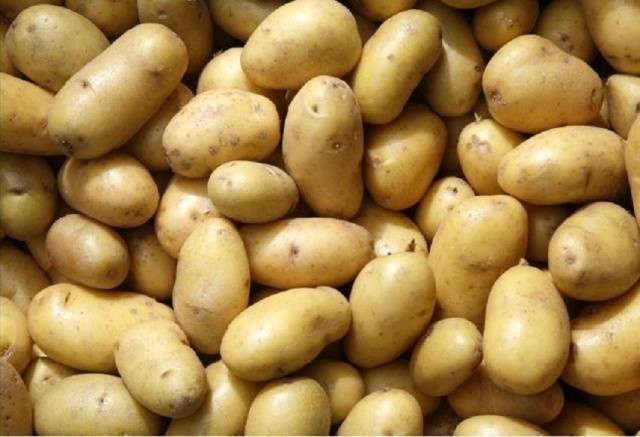
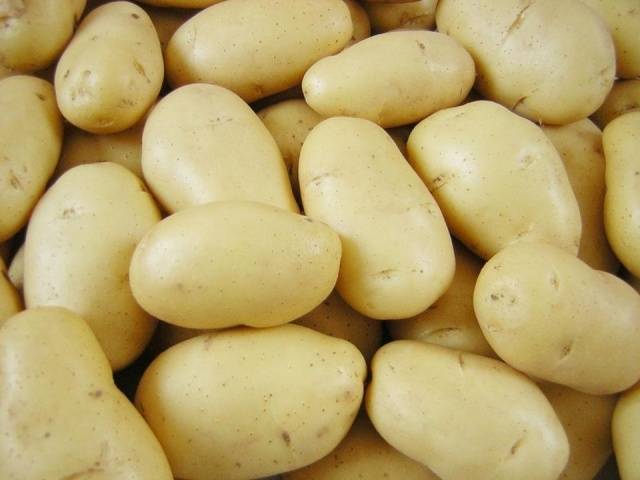
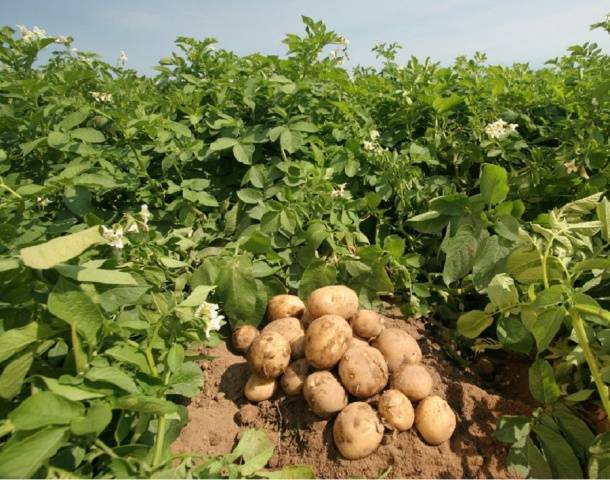
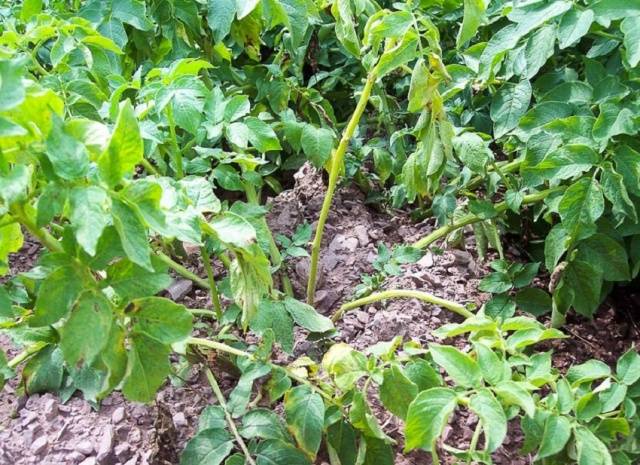
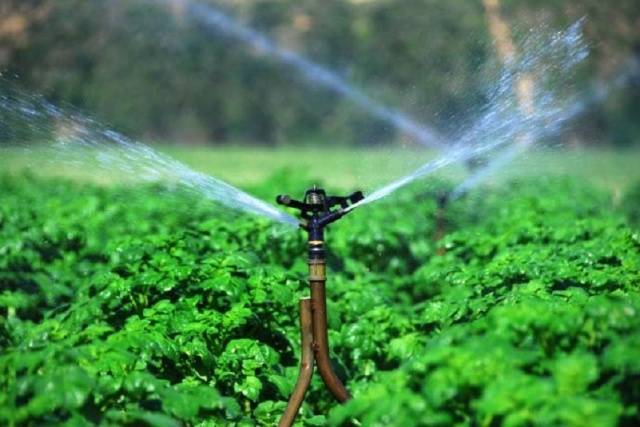 For the Granada variety, you need to maintain moderate watering.Under normal climatic conditions, watering should be carried out no more than three times per season - after emergence, after budding, after flowering. In rainy weather, you may not need to water at all until flowering. Watering is considered to be of high quality if the soil is wet to 50 cm.
For the Granada variety, you need to maintain moderate watering.Under normal climatic conditions, watering should be carried out no more than three times per season - after emergence, after budding, after flowering. In rainy weather, you may not need to water at all until flowering. Watering is considered to be of high quality if the soil is wet to 50 cm.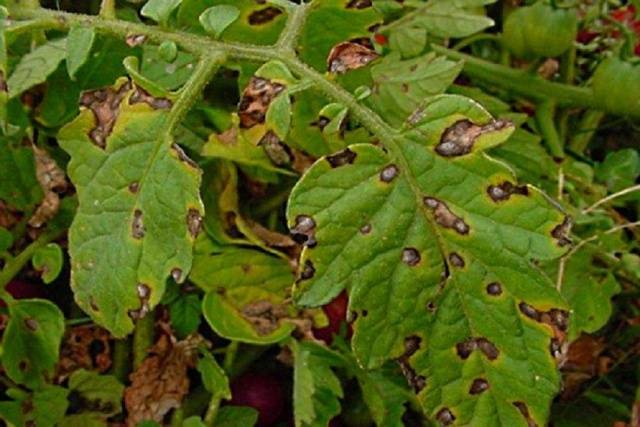 To prevent such a disaster, tubers are sprayed before planting. Biological products “Baktofit”, “Integral”, “Planriz” are suitable for prevention. The vegetative period requires treatment with a 0.2% solution of other drugs - “Profit”, “Kuproksat”, “Tanos”. To prevent Fusarium wilt of Granada potatoes, it is best to use Baktofit or Fitosporin.
To prevent such a disaster, tubers are sprayed before planting. Biological products “Baktofit”, “Integral”, “Planriz” are suitable for prevention. The vegetative period requires treatment with a 0.2% solution of other drugs - “Profit”, “Kuproksat”, “Tanos”. To prevent Fusarium wilt of Granada potatoes, it is best to use Baktofit or Fitosporin.